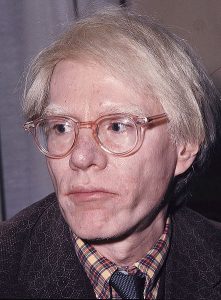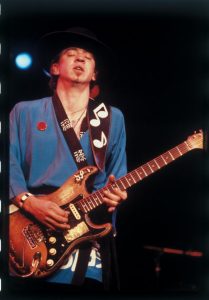As reporters and health officials walked onto the grounds of the mass suicide in Guayana, they were in shock over what they were seeing; hundreds of bodies face down on the ground, dead. One person who was at the site said that the amount of dead bodies was appalling, “it was depicted as not American, not religious, not sane, and ultimately not human.”1 Over 550 bodies of the 900 were unclaimed for almost six months until US Officials decided to cremate them. Once they brought the bodies back to the United States from Guayana, many Americans didn’t think it was right to have these bodies spread out on American soil because of the act they made. US Officials then decided to scatter the ashes of the dead bodies away from the United States border lines.

It all started with Jim Jones. Jones was a religious/political cult leader who had established the People’s Temple as a sect in Indianapolis in the 1950s. His cult focused on themes of communism, and the fight against racism, attracting many African Americans. He moved his cult to San Francisco in 1971, but it would not remain there for long. Soon after the group moved there, Jones was accused of financial fraud, physical abuse of his cult’s members, and mistreatment of children. After Jones was accused, in 1973, he became paranoid that someone would try to destroy his cult, so he moved his entire group to Guayana, South America, to build a socialist utopia known as Jonestown.

Once the cult moved to Guayana, people started to question even more the accusations being made against Jim Jones. Members who had left or escaped the cult were worried for the people still in the cult, so they convinced U.S. Congressmen Leo Ryan of California to fly to Guyana. “In November 1978, Ryan along with a group of journalists and relatives of cult members went to investigate the charges.”2 Jones did not like the idea of people coming to investigate, so he ordered his followers to have Ryan and his investigators assassinated. He ordered the attack on the group as they were returning to the airstrip to leave. A journalist named Charles Krause reported that that morning Ryan was attacked by a man with a knife, although he was not hurt by the incident. “Later that same day, Ryan and his party were attacked by assassins at the Port Kaituma Airstrip. Ryan and four others were killed and ten were injured.”3 While these killings were going on, Jones feared that he would lose his cult members and they would turn against him. He then proceeded to lead his people through a mass suicide, which was something the members had repeatedly practiced since the early 1970s.
These practices were called “White Nights” and consisted of members drinking a liquid that they believed was poisonous as a loyalty test to Jones.4 During these “White Nights,” people were woken up by a loud speaker, and they would assemble for the ritual of passing around a drink of kool-aid, which they were told was poison. Unfortunately, this time was not a test. Hundreds of adults and children lined up to drink this colorful, fruit-flavored punch, which contained cyanide and tranquilizers. Most of them thought they were just proving their loyalty as before, but as more people began to die, they realized that this time it was real. “Over 260 children, for example, had the poison given to them, while only about 40 adults escaped.”5 For those who died willingly though, collective suicide held a religious significance in the context of the worldview that had been established in Jonestown.

Collective suicide was a ritual that signified a purity of commitment to the community. On the night that they all drank this poison, Jim Jones announced “that the members of the community were united as black, proud socialists.”6 Collective suicide also promised release from a world dominated by what Jones perceived as American racism, capitalism, and fascism. He did not want to be captured and taken back to America, so instead he urged his followers to drink the poison, and “step out of the world.”7 Jones had told his followers that they were not committing suicide, but rather they were performing an act of freeing themselves from the harsh world that they lived in. There are later reports that when officials went to Jonestown, Jim Jones was found with gunshot wounds, raising the speculation that either he had committed suicide or someone else had killed him.
The Jonestown Massacre was the largest mass suicide in modern history and resulted in the largest single loss of American civilian life in a non-natural disaster until the September 11 attack in 2001. The mass suicide resulted in over 900 deaths of innocent lives. Once the bodies were found, the Guyanese government asked the United States to take the bodies back. US Officials decided to start sending a few people over to identify bodies so they could decide what to do with them. Over 500 bodies were unclaimed and that is when the United States decided to have the US Air Force come in to take the bodies back to the United States.”8 To this day, families of loved ones are still trying to find a memorial place for the lost lives.
- Encyclopedia of Religion, 2005, s.v. “Jonestown and Peoples Temple,” by David Chidester. ↵
- Dictionary of American History, 2003, s.v. “Jonestown Massacre,” by Carolyn Bronstein. ↵
- Dictionary of American History, 2003, s.v. “Jonestown Massacre,” by Carolyn Bronstein. ↵
- Dictionary of American History, 2003, s.v. “Jonestown Massacre,” by Carolyn Bronstein. ↵
- Encyclopdeia of Religion, 2005, s.v. “Jonestown and Peoples Temple,” by David Chidester. ↵
- Encyclopdeia of Religion, 2005, s.v. “Jonestown and Peoples Temple,” by David Chidester. ↵
- Encyclopdeia of Religion, 2005, s.v. “Jonestown and Peoples Temple,” by David Chidester. ↵
- Encyclopdeia of Religion, 2005, s.v. “Jonestown and Peoples Temple,” by David Chidester. ↵



150 comments
Samuel Stallcup
I had no idea this had even happened, therefore I was intrigued by the title. This reminded me of Charles Manson, however I don’t believe Charles Manson did anything ever like this. I feel that this is one of the more extreme cult rituals in our history. It’s quite impressive that one man convinced hundreds of people to believe in certain ideas, and I feel that it’s more impressive that he was able to convince people to drink “poison” as a test for their loyalty.
Anthony Robledo
This article is extremely interesting, but the title didn’t catch my attention. The first paragraph though was so graphic and intense, that I just had to keep reading. The way people would kill themselves in the practices of white nights was freaky and mind boggling. I would recommend lightening the mood so that more people can see this. Taking a more comedic route to a horror story would have in my opinion made this article a better read. Either way though, Great story.
Eduardo Foster
Jones ideologies were crazy! It’s unbelievable how people followed him to do this crazy stuff! I have never heard of this massacre before in my life and I’m shocked about what happen back in 1978. Its unfortunately that some families still to the day have not located their corpses. It’s was a shocking article and nice information, never heard of the event before.
Andrea Chavez
Reading this article gave me goosebumps. It is really terrifying to see that people who are not mentally stable or sane have so much power over other. It surprises me even more hoe there are people who are willing to follow. And not only follow, but to not even question certain methods or ideas he is trying to implement. If someone order the assassination of other humans that is where I would at least reconsider who I am actually following, because he was saying peace and no racism but taking other people’s life’s is a whole bigger thing.
Crystalrose Quintero
Ms. Ybarra’s article I found to be fully insightful and yet concise. the title does a good job of centralizing what the subject of topic is. the initial most grabbing aspect of were the four gripping photos quickly calling my attention and yet offering a summary to the tragedy that is expected. after reading, the article had so much to offer, and I enjoy that she was able to bring about this event and compare to others in history. It provides a more clear perspective on the severity of this event in history.
Jazmin Pizana
I usually find it hard to follow along with serious topics but this article was great read! Very interesting and kept me engaged from beginning to end. I’ve heard the phrase “drink the kool-aid” but never knew what it really meant. This is such a tragic story of how this man, Jim Jones, convinced all these innocent people who believed and trusted him to commit suicide.
Osman Rodriguez
Terrible instance in American history. The man was insane. His ideologies, of course, made it easy for certain people to follow him. It seems that his insanity and corruptness was masked by things he said. Again, this is a dark and terrible instance. I feel as though, even today, people are still susceptible to falling for people in this manner. Maybe not to the point of mass suicide, but to a point where there is some sort of violence, neglecting, and complete shift of morals.
Richard Navarro
Sort of stumbled upon this article. Its crazy to think that people would actually follow this guy because of such insecurities. The pictures really brought this article to life. I could only imagine living in a time like this. The fact that he had everyone move out of the states and started a bigger cult elsewhere makes me wonder how much of a good speaker and persuader he must have been. Overall, this was a very interesting article to read!
Brianda Gomez
This article is truly breathtaking. Before I read this article I never knew about the Jonestown massacre. As I was reading I realized how this massacre came to be. Jim Jones took the life of over 900 people including children. It is heart aching how people were willing to commit suicide because of Jim Jones. These rituals called “white poison” were practiced before but little did these individuals know that what they were practicing would one day not only take their lives but their children’s lives as well.
Alejandra Chavez
As someone who has plans to one day serve in the United States Air Force, I could not imagine the reaction I would have had if I were to be one of those Airmen that was deployed to retrieve bodies from history’s largest suicide. It is amazing what a good leader is capable of. Like Hitler, who led one one of (if not the) worlds largest genocides, Jones was able to brainwash a large group of people to not only relocate to a different part of the world, but voluntarily drink a poison that would kill 900 innocent people. He was able to get people to commit to his ideology and was able to persuade his followers to kill themselves by telling them it was a way of becoming free from the harsh world.